This article originally appeared in the December 2012 issue of Architectural Digest.
There was no script, no pilot, basically just a sketch of an idea: a television comedy about a New York family man with a disability. But the lead role was to be played by Michael J. Fox, and the story lines would be loosely based on his experiences living with Parkinson’s disease for the past two decades. (The actor’s eponymous foundation has raised more than $300 million for Parkinson’s research.) Multiple networks wanted the show. NBC, which committed to producing 22 episodes, won the bidding war, and Fox’s return to a starring prime-time role is slated for next fall.
The series undoubtedly will feature his character in scenes at home. Chances are, however, the set won’t look much like the Manhattan apartment Fox shares with his wife, actor Tracy Pollan, and their four children in an august Upper East Side building. That apartment is their sanctuary. Private. For family and friends. And, until recently, not exactly camera-ready.
In the more than 15 years since it was decorated by Marc Charbonnet in a traditional style (AD, October 1997), the Fox-Pollan home had gradually become a monument to entropy. “Our tastes changed, but we held off redecorating—it seemed like a big undertaking,” Pollan explains. “Something would rip, and I’d say, ‘Just wait.’ The paint would peel. I’d say, ‘Just wait.’”
Fox is more succinct. “This place has raised four kids,” he says. “We beat the hell out of it.”
For the reclamation project Fox and Pollan turned to Mariette Himes Gomez and her daughter, Brooke, the team behind the Manhattan interior design firm Gomez Associates. Fox says he and Pollan knew precisely what they wanted: “a younger-style apartment than we had when we were younger.”
That meant jettisoning the vividly hued antique carpets, the plump, tufted seating, and the richly patterned curtains. “Michael and Tracy are very aesthetic people,” Mariette says, “but for them family comes first.” So the updated living room is a stage set for informal gatherings, with people, not objects, front and center. It’s a whisper of a space, with clean lines, neutral colors, and sleek modern furnishings. The earth-tone Arne Bang stoneware vessels on the mantel are significant but unassuming. Lacquered tables quietly gleam. The major events are top-notch artworks by Louise Bourgeois and Richard Pousette-Dart, the latter a predominately white dappled canvas. “I did get to indulge my obsessions in subtle ways,” Brooke says. “We accented the pillows on the chenille sofas with antique trim. And the shades on the smoked-Murano-glass lamps were custom made.”
Fox may be Hollywood A-list, thanks to his roles on Family Ties and Spin City and as the hero in the Back to the Future films, but all the photographs displayed in a long hallway are of family. The only evidence that Fox or Pollan work in show business—they met on the set of* Family Ties*—has been banished to his office, which is in the same building several floors away. That space is home to Fox’s five Emmys and four Golden Globes. “I’m not shy about the awards,” he says. “But they’re to intimidate, not to impress.”
Throughout the apartment graceful touches are balanced with practicality. In the dining room, with its treetop views of Central Park, the decorators installed a circa-1940 Venetian-glass chandelier, a gray-tone photo diptych by Uta Barth, and a wall-mounted George Nakashima console. But a visitor couldn’t help also noticing protective pads atop the dining table. It’s where the kids do their homework.
In the breakfast room, which is where the family often takes its meals, the previous banquette upholstery had been held together by tape. To re-cover it, the Gomezes found a pale Lee Jofa fabric that was luscious in the extreme. At first Pollan balked, but only briefly, rationalizing, “Our kids are so careful.” Now they are urged to be mindful during meals—and aren’t always silent about it. As one daughter protested, “You think you did an* upgrade?*”
Closets are often in short supply in Manhattan apartments, and it’s no different here, including in the master bedroom. While the common solution is to annex more space for storage, Pollan makes do with a decidedly modest walk-in closet. “It’s enough for me,” she says. Shoes are not her priority. “In a fire,” she remarks, “I’d save the art and the pottery.” Among the bedroom’s muted accent pieces are an Axel Salto stoneware vase, an elegant Art Nouveau bench, and a painting by Judith Belzer (the wife of Pollan’s brother, writer Michael Pollan). The bathrooms, left largely as they were, retain a charming prewar feel. “We like old New York apartments,” Fox says. “We never wanted a SoHo loft.”
For all its refinements, the home exudes continuity and familiarity—it’s a place where people actually live. Children wander through. And dogs, too. A very contented Fox refers to the apartment as “the location of my inner peace.”
Yes, but what would Alex P. Keaton, the smart-aleck conservative son on* Family Ties,* say? The question produces a wicked grin. And a wry response from the actor who made that character an icon: “Alex would call this apartment economical. But not.”
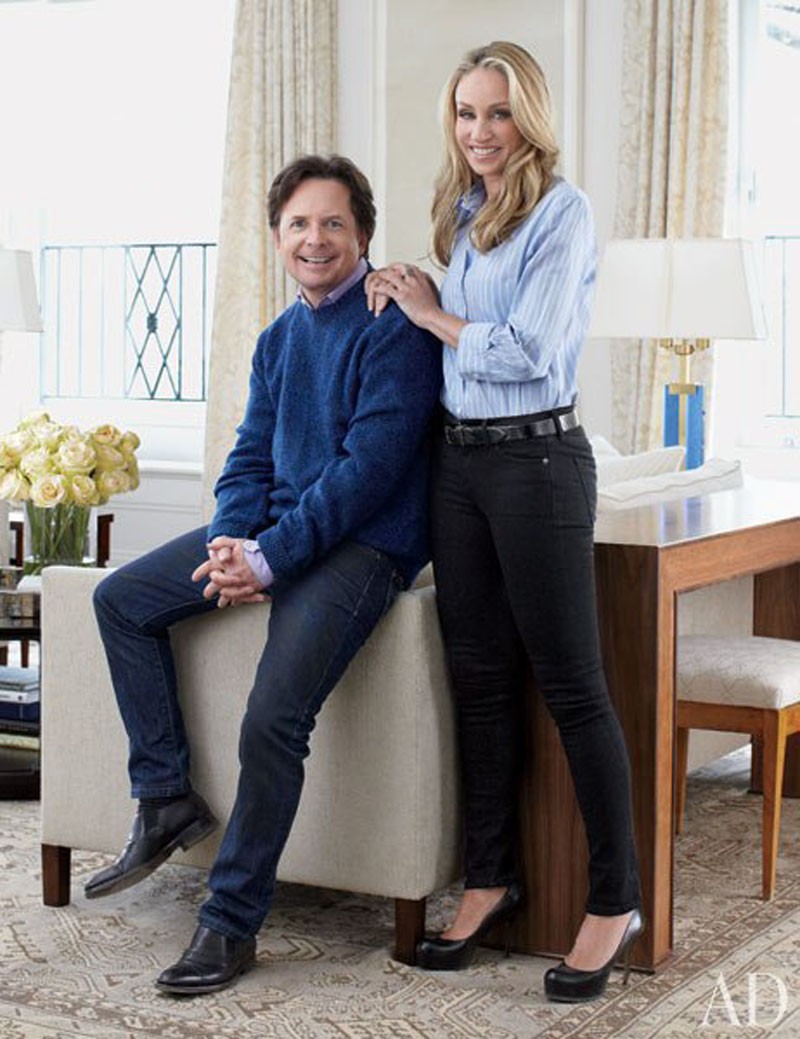
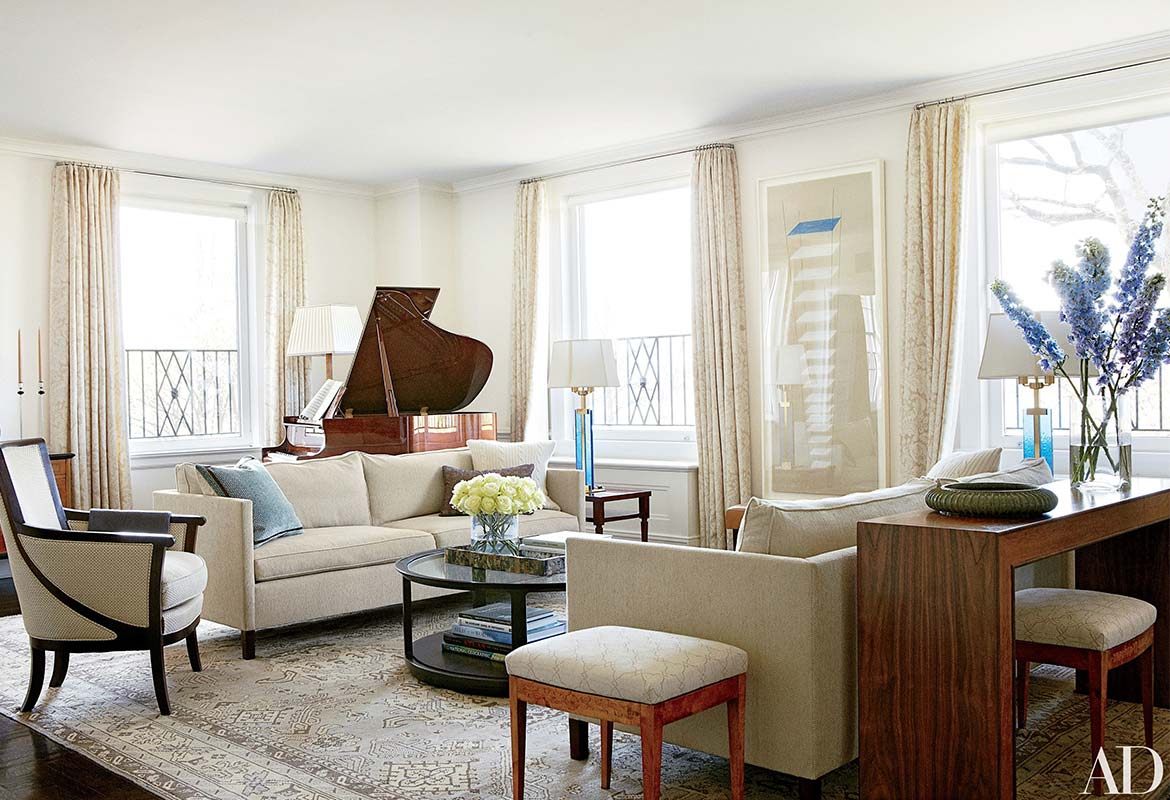
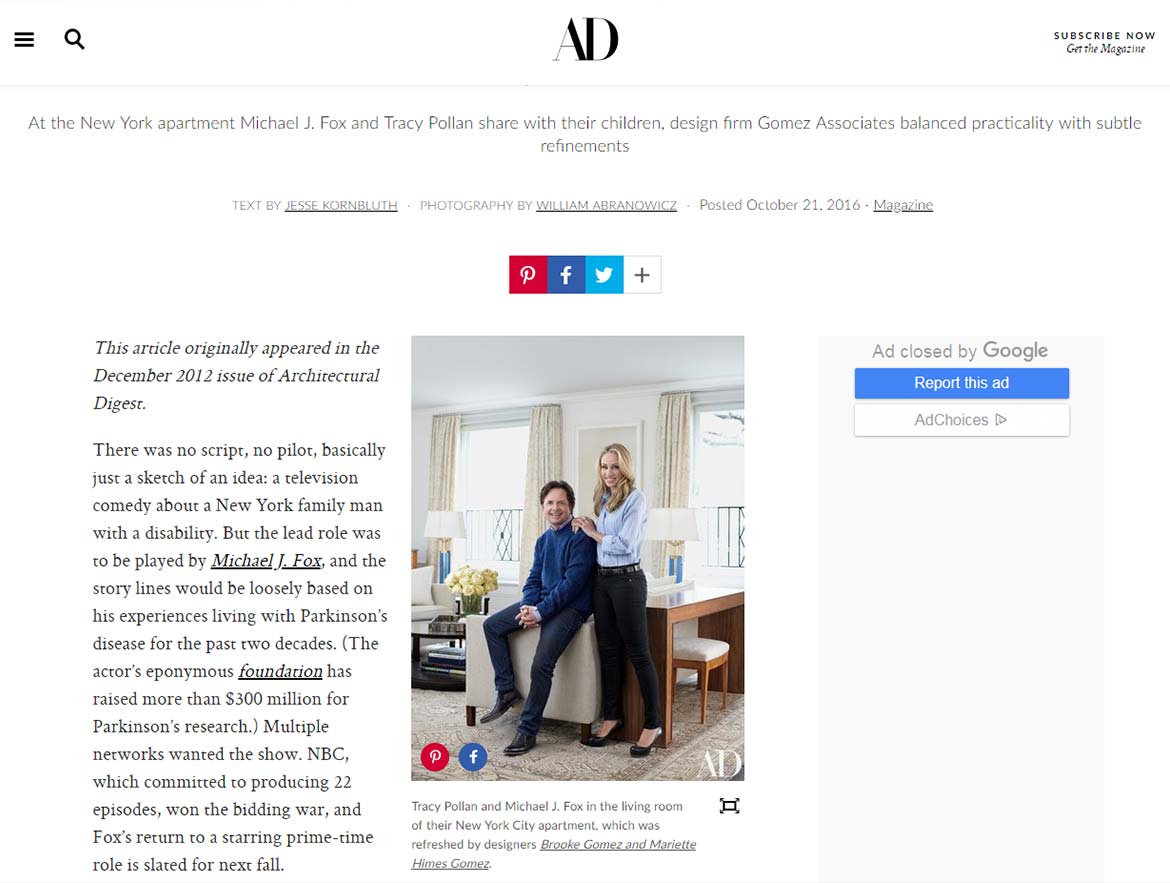
Reprinted from Architectural Digest, December 2012
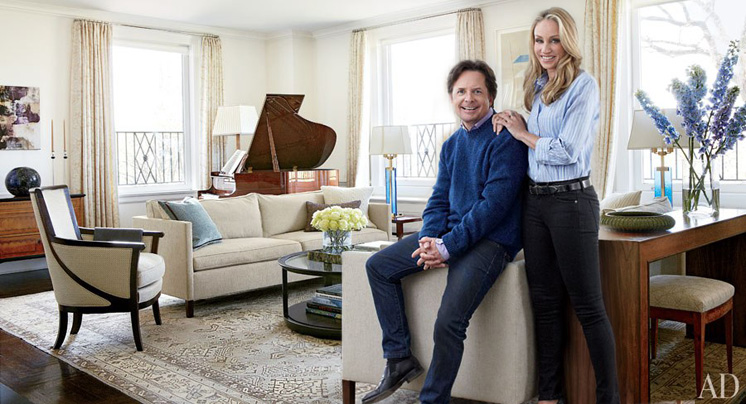
Interior Design by Gomez Associates.
Oushak late 19th Century Rug from DLB.
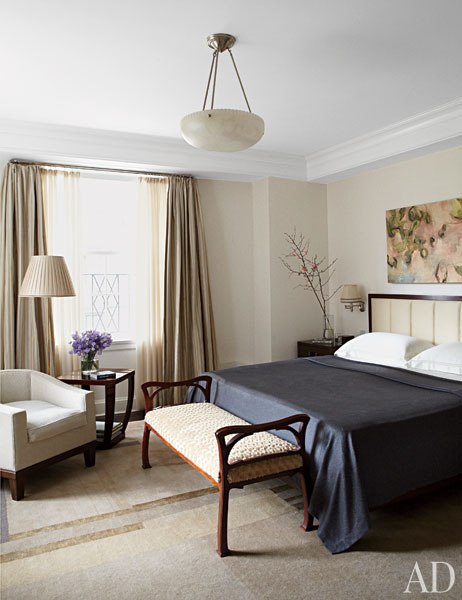
DLB – Bauhause Tibetan Rug”Interior Design by Gomez Associates.
Bauhaus Tibetan Rug from Doris Leslie Blau.
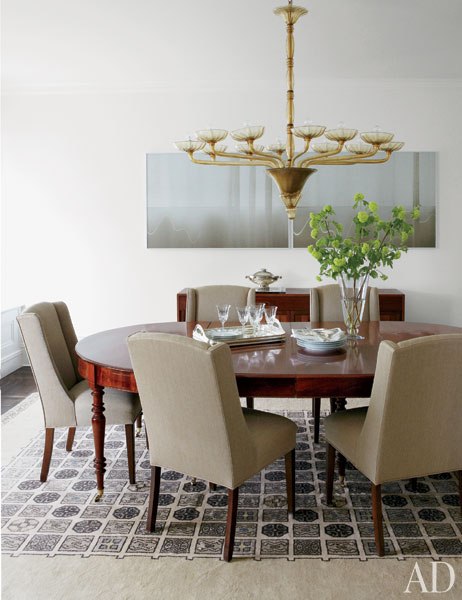
Interior Design by Gomez Associates.
French Deco Rug by Jules Leleu.
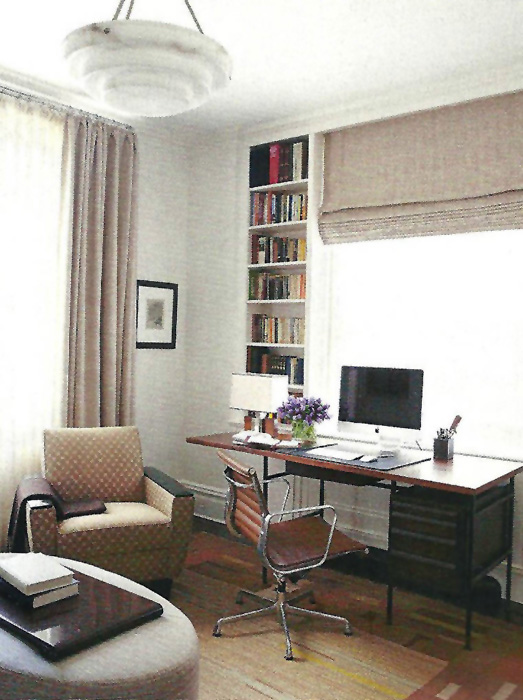
Interior Design by Gomez Associates.
Functionalist – Finnish carpet circa 1935.
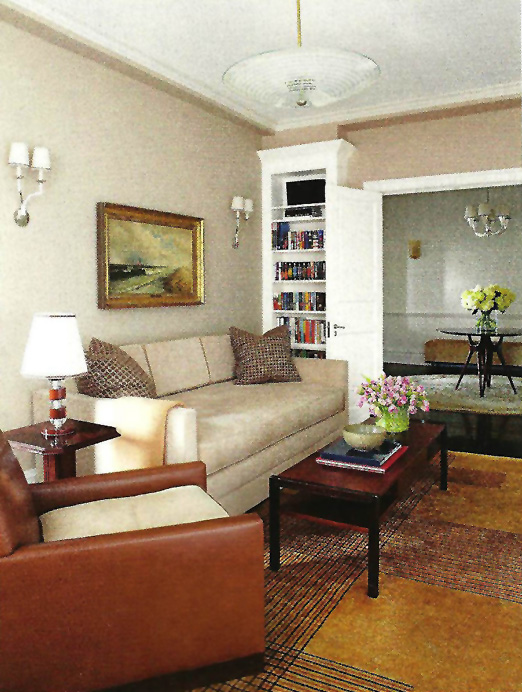
Interior Design by Gomez Associates.
Studio De Saedeleer rug circa 1930.

This article originally appeared in the December 2012 issue of Architectural Digest.
